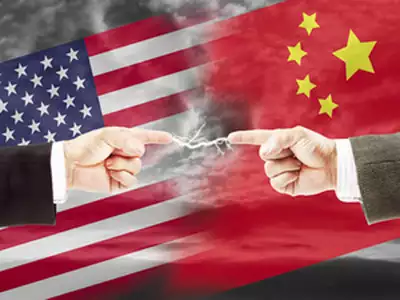China has unveiled a comprehensive action plan to stabilize foreign investment by 2025, aiming to reassure global executives wary of escalating US-China trade tensions. The move comes as foreign direct investment (FDI) in China plummeted by 27.1% in 2024, marking the sharpest decline since the 2008 global financial crisis.
At a State Council meeting chaired by Premier Li Qiang, Chinese leaders pledged to introduce new incentives for foreign companies and investors. The plan includes removing manufacturing investment restrictions, expanding sectors open to foreign capital, and ensuring equal treatment for domestic and foreign firms in government procurement.
Key Measures to Attract Foreign Investors
The Chinese government aims to streamline cross-border mergers and acquisitions, broaden financing channels for foreign businesses, and strengthen intellectual property protections. Additionally, it will simplify visa and work permit procedures for foreign personnel, making it easier for them to live and work in China.

These measures are part of a broader effort to counter the sustained downturn in foreign investment. Despite a nearly 10% year-on-year increase in newly established foreign-funded enterprises in 2023, the number of employees at foreign firms in China has hit a 14-year low.
US-China Trade War Intensifies
The push to stabilize foreign investment comes amid rising US-China trade tensions. Since Donald Trump’s return to the US presidency, both nations have engaged in tit-for-tat tariff actions. China recently imposed 10-15% tariffs on a range of US imports, while Trump signed an executive order imposing a 25% tariff on all steel and aluminium imports.
Jens Eskelund, president of the European Union Chamber of Commerce in China, warned that the politicization of trade and abrupt policy actions are creating uncertainty for foreign investors. The chamber expressed concern over China’s decision to place PVH, the parent company of Calvin Klein and Tommy Hilfiger, on its unreliable entity list in retaliation for US tariffs.
Domestic Demand and Consumption Growth
In addition to stabilizing foreign investment, the State Council announced measures to stimulate domestic demand and counter potential export declines. These include expanding consumption in culture, sports, and tourism, boosting the winter sports industry, and supporting a trade-in program for consumer goods.
The government also plans to cultivate new consumption growth areas in artificial intelligence and healthcare, while improving the overall quality of consumer spending. Beijing is prioritizing consumption growth as a cornerstone of its 2025 economic strategy, following a year where economic expansion was largely driven by exports now threatened by US tariffs.
Conclusion
As China faces mounting economic challenges, its new action plan underscores its commitment to retaining foreign investors and stabilizing its economy. By addressing concerns over trade tensions, streamlining regulations, and boosting domestic consumption, China aims to navigate the complexities of the US-China trade war while maintaining its position as a global economic powerhouse.
For more insights on global trends and their impact, explore SCMP Knowledge, your go-to platform for curated content, explainers, and analyses.



